Product Overview
Methylene Blue (MB) is a synthetic chemical compound that serves both as a dye and a medicinal agent. Discovered in 1876 by German chemist Heinrich Caro, it holds the distinction of being the first fully synthetic drug used in medicine. In the late 19th century, MB was repurposed from textile dye to medical therapy: in 1891, Paul Ehrlich and colleagues employed it as an antimalarial treatment, demonstrating that a chemical dye could function as a therapeutic agent.[1] Since then, MB has been explored for a wide range of clinical uses over its long history. It was investigated in the 1890s for psychiatric conditions like schizophrenia and later used in the early 20th century for urinary tract infections, owing to its antimicrobial properties. During both World Wars, MB continued to play an important role as an antimalarial medication before modern drugs like chloroquine were developed.[1] This rich historical background underpins its modern reputation as a versatile yet unconventional treatment option.[1]
Today, Methylene Blue is perhaps best known in medicine for treating methemoglobinemia, a serious condition in which hemoglobin is oxidized to a form (methemoglobin) that cannot carry oxygen effectively. MB is FDA-approved (as an intravenous formulation) for acquired methemoglobinemia under the trade name ProvayBlue®, reflecting its critical use as an antidote in life-threatening scenarios.[2] Beyond this primary indication, MB has been utilized off-label in various medical settings. Surgeons employ it as a vivid blue dye during procedures, for example, to map sentinel lymph nodes in breast cancer surgery or to identify parathyroid glands, taking advantage of its visible staining properties.[3] Additionally, anesthesiologists have used MB to manage vasoplegic syndrome (a form of severe refractory hypotension) during cardiac surgery, since MB’s pharmacological actions can help raise blood pressure in that context.[4] It has also been administered as an antidote in certain poisonings (such as ifosfamide-induced encephalopathy and, historically, cyanide poisoning) and used diagnostically in procedures like amniotic leak tests and fistula detections.[5] These diverse applications illustrate MB’s unique pharmacological profile and its ability to interact with biological systems in multiple ways.[3]
In recent years, there has been growing interest in low-dose oral Methylene Blue for a variety of emerging or investigational uses. Researchers have explored MB’s potential to support cognitive function, memory, and mood, given observations that MB may have neuroprotective and antidepressant effects.[1] Small clinical studies and case reports have noted that MB at modest doses might improve symptoms in conditions such as Alzheimer’s disease and bipolar depression, possibly by reducing pathological protein aggregation and enhancing neural energy metabolism.[1] MB’s antioxidant and mitochondrial-supporting properties have also led some clinicians to consider it in chronic fatigue and neurodegenerative conditions, although such uses remain experimental and are not formally approved.[6] It is important to emphasize that when MB is used for these novel indications, it is being prescribed off-label on the basis of theoretical or preliminary evidence, and robust clinical trial data are still limited.[1] Patients should be cautioned that the efficacy and safety of MB for these wellness or cognitive applications are not yet established, and such therapy must be closely supervised by a qualified healthcare provider.[1]
Methylene Blue Capsules are an oral compounded formulation containing the active ingredient methylene blue in precise low doses. In compounding pharmacies operating under Section 503A of the U.S. Federal Food, Drug, and Cosmetic Act, pharmacists can prepare MB capsules in strengths such as 2.5 mg and 5 mg to meet individual patient needs.[6] These capsules are typically bright blue in color due to the inherent dye properties of MB, and they are intended for oral administration. Because no commercial oral MB product is approved by the FDA for general use, compounding is utilized to provide this medication in capsule form. Importantly, Methylene Blue capsules are available only by prescription, reflecting that MB is a potent drug with significant physiological effects and risks. As a 503A compounded medication, each batch is made for a specific patient pursuant to a prescription, in compliance with USP compounding standards and state board of pharmacy regulations. Patients should understand that this formulation has not been evaluated or approved by the FDA for safety or efficacy, and its use is justified by a prescriber’s judgment in situations where an FDA-approved alternative may not be suitable. In summary, Methylene Blue capsules represent a personalized therapy avenue for specific cases, under the careful oversight of healthcare professionals, and with full acknowledgment of their prescription-only status and compounded nature.[6]
Methylene Blue Capsules are available in low doses (2.5 mg and 5 mg) to allow for flexible, individualized dosing regimens. Unlike many conventional medications, there is not a one-size-fits-all dosage for MB when used orally; the appropriate dose can vary greatly depending on the indication and patient-specific factors. In general, when MB is used chronically or for off-label indications (such as cognitive support or chronic illness), clinicians employ a “start low and go slow” approach, beginning with small doses and adjusting as needed. An initial dose might be on the order of 5 mg (for instance, one 5 mg capsule daily) to assess tolerance. If needed, the dose can be titrated upward in 5 mg increments, while monitoring for therapeutic benefits or adverse effects. Common low-dose regimens fall in the range of about 5 mg to 20 mg per day, and occasionally up to 30 mg per day, administered in divided doses or once daily depending on the context.[6] One compounding pharmacy literature source suggests that the best therapeutic effects of low-dose MB are often achieved with total daily doses on the order of 10-30 mg and exceeding this range might increase the risk of side effects without commensurate benefit.[6] This is consistent with the concept of hormesis, where very high doses could be counterproductive; thus, more is not always better with Methylene Blue.[6]
Dosage strategies differ by condition. For example, in exploratory trials for Alzheimer’s disease, a specialized oral formulation of MB (methylthioninium chloride, brand name LMTM) was studied at doses as low as 4 mg twice daily (8 mg total per day) and showed some promise in slowing cognitive decline.[10] This low-dose approach contrasted with earlier trials that used much higher doses (e.g., 138 mg or 228 mg daily), which did not significantly outperform placebo; a finding that supports the notion that moderate dosing may be optimal in neurodegenerative disease contexts.[10] For mood disorders like bipolar depression, clinical research has experimented with doses ranging from 15 mg daily (which demonstrated antidepressant effects in small studies) up to 200-300 mg daily in divided doses for refractory cases.[11] In one crossover study, patients with bipolar disorder on lithium were given either 15 mg or 300 mg of MB daily, and those on the higher dose experienced significantly less depression, suggesting efficacy at that dose, though side effects and long-term safety at such high doses remain concerns.[11] However, it is critical to note that these high dosages far exceed what is typically compounded in routine practice and would require hospital oversight or a clinical trial setting. For most outpatient purposes with 2.5 mg and 5 mg capsules, clinicians will usually remain in the low tens of milligrams range per day. For instance, a common regimen for cognitive support might be 5 mg twice daily (10 mg/day) or 5 mg in the morning and 10 mg in the afternoon (15 mg/day) if tolerated and deemed necessary. Each patient’s response is different, so the dose is highly individualized and determined by the prescribing provider’s judgment.[6]
It is also crucial to differentiate oral dosing from acute emergency dosing. In emergency treatment of acquired methemoglobinemia (typically using IV MB), the dose is weight-based, usually 1-2 mg/kg intravenously, which for an average adult (70 kg) is on the order of 70-140 mg administered once and can be repeated once if needed.[2] These doses are much higher and are given under close medical supervision. Oral MB capsules are not used for acute methemoglobinemia because the onset of action would be too slow and the bioavailability may be lower than IV; instead, oral capsules are for more elective or chronic therapy purposes. If a patient at home were suspected to have methemoglobinemia, they should go to an emergency department for IV treatment rather than attempt to take multiple capsules, as timing is critical in that condition. For other off-label uses (like chronic urinary tract infection prophylaxis or chronic pain syndromes), MB dosing can vary historically, older formulations like “Urolene Blue” combined MB with other agents and delivered around 65-100 mg of MB per dose for urinary antiseptic purposes, taken several times a day.[5] However, modern practice rarely employs such high oral doses due to the side effect profile. Instead, if MB is used in a pain management context (e.g., oral rinse for mucositis pain), it might be compounded at a concentration for topical use (e.g., 5 mg/mL as a rinse) rather than systemic dosing.[6] In any case, the prescriber’s familiarity with MB will guide the dose: for instance, a neurologist exploring MB for cognitive impairment might aim for 8-16 mg/day based on Alzheimer’s trials, whereas a psychiatrist augmenting an antidepressant (experimentally) might try 15 mg/day based on older studies.[10][11] All such uses are off-label and done with caution.
Administration instructions for Methylene Blue capsules should be clearly given to the patient. Typically, capsules are taken with a full glass of water. They can be taken with or without food but taking with food may reduce stomach upset in those who experience nausea.[3] Patients should swallow the capsule whole and not chew or open it, because the dye will stain the mouth and potentially irritate mucous membranes. If a dose is missed, the patient should take it as soon as remembered unless it is close to the time for the next dose; they should not double up doses to make up for a missed one. Due to the potential for insomnia (if MB has mild stimulating effects in some individuals), some practitioners advise avoiding dosing late in the evening, although this is patient specific. When on a multi-dose per day regimen, doses are usually spaced evenly (e.g., morning and afternoon). The duration of therapy can range from a brief course (days to weeks, in cases like ifosfamide neurotoxicity treatment or a trial for acute depression) to longer-term use (months) for chronic conditions. However, long-term safety of MB hasn’t been studied extensively, so periodic evaluation is recommended. The physician might schedule regular follow-ups and possibly lab tests (like complete blood counts and metabolic panels) to monitor any subtle effects on blood or organs over time.[8]
Lastly, because compounded MB capsules are an “unapproved” formulation, dosing may sometimes be guided by practical experience rather than formal guidelines. The compounding pharmacy will typically include a beyond-use date on the prescription (often 6 months for capsules) and instructions to store properly (see Storage). Patients should be counselled not to exceed the prescribed dosage and to keep a consistent schedule. If therapy needs to be stopped, generally MB does not require tapering (it can be stopped abruptly), but if it was used in high doses, healthcare providers might choose to step down gradually to observe for any mood changes or recurrence of symptoms. In summary, dosing of Methylene Blue capsules is carefully tailored, usually starting at 2.5-5 mg and adjusting to an effective, tolerable dose, with most chronic uses falling below 30 mg per day.[10] All dosing decisions are made by the prescribing practitioner, considering the delicate balance between potential benefits and the dose-dependent risks of this unique medication.
Methylene Blue exhibits a multifaceted mechanism of action, interacting with cellular processes in ways that can be therapeutic in certain conditions. A primary mechanism is its role as a redox agent: MB can accept electrons and undergo reduction to leucomethylene blue, and in doing so it helps convert oxidized hemoglobin (methemoglobin, Fe³⁺) back to functional hemoglobin (Fe²⁺).[2] This is the basis for its lifesaving effect in methemoglobinemia. Under normal conditions, an enzyme system (NADPH-dependent methemoglobin reductase) keeps methemoglobin levels low, but if this system is overwhelmed (by oxidant drugs or toxins), MB administered intravenously acts as an artificial electron carrier. It facilitates the reduction of methemoglobin, thereby restoring hemoglobin’s oxygen-carrying capacity.[2] By rapidly reversing the cyanosis and hypoxia of methemoglobinemia, MB improves oxygen delivery to tissues, often within minutes of administration.[2] This redox cycling property is shared by certain other agents (for example, ascorbic acid can also reduce methemoglobin, albeit less efficiently), but MB is the treatment of choice for significant methemoglobinemia because of its reliability and potency.[2] It should be noted that this mechanism requires intact glucose-6-phosphate dehydrogenase (G6PD) activity in red blood cells to generate NADPH; in G6PD-deficient individuals, MB’s redox cycling is impaired, which can render the drug less effective and even introduce risks (see Contraindications).[7]
Beyond its effect on hemoglobin, Methylene Blue influences cellular respiration and energy production, especially within mitochondria. At low doses, MB has been shown to act as an alternative electron shuttle in the mitochondrial electron transport chain, potentially accepting and donating electrons within the chain. By doing so, MB may enhance mitochondrial efficiency and ATP production when cellular respiration is suboptimal. This phenomenon is sometimes described as hormesis, where a low dose of a compound has a beneficial effect while higher doses have the opposite impact. Specifically, low-dose MB can facilitate electron flow and reduce leakage of reactive oxygen species, thereby reducing oxidative stress in cells. In contrast, at higher concentrations, MB may start to divert electrons away from the normal chain and inhibit the respiratory enzymes, which could decrease ATP generation and increase oxidative stress. The net effect is dose-dependent: low doses of MB tend to improve mitochondrial function and cellular energy, whereas excessive doses may impair these processes.[6] These properties underlie the interest in MB as a neuroprotective or nootropic agent, by bolstering mitochondrial activity in neurons, MB might support cognitive processes such as memory and learning, although clinical evidence is still emerging.[1] Furthermore, MB’s antioxidant capability, directly scavenging free radicals or indirectly reducing their production, could contribute to protective effects against oxidative damage in tissues. This mechanistic profile positions MB as a compound that straddles the line between metabolic enhancer and pro-oxidant, depending on the context and dosage.[6]
Methylene Blue also has pharmacological actions on signaling pathways, notably the nitric oxide (NO)-cyclic GMP pathway. MB is an inhibitor of nitric oxide synthase (particularly endothelial NOS and inducible NOS) and guanylate cyclase. By inhibiting guanylate cyclase, MB prevents NO from exerting its vasodilatory effect on blood vessels (since NO’s relaxation of vascular smooth muscle is mediated by cyclic GMP).[2] The result is vasoconstriction and increased systemic vascular resistance, which can be therapeutically useful in conditions like vasoplegic shock where pathological vasodilation has caused life-threatening hypotension. In cardiac surgery or septic shock scenarios, intravenous MB has been administered to raise blood pressure when catecholamine vasopressors were insufficient.[4] The mechanism involves MB binding to the heme moiety of guanylate cyclase, thus blocking NO signaling, and thereby promoting vasoconstriction.[2] This same property explains some side effects as well; MB can cause a rise in blood pressure and peripheral vascular resistance, and it may reduce regional blood flow (for instance, caution is needed in patients with pulmonary hypertension or compromised circulation because MB could potentially worsen those by opposing NO-mediated vasodilation). Additionally, by reducing NO levels, MB has been observed to counteract severe inflammation and vasodilation in conditions like septic shock, although its use in such settings is off-label and typically reserved for refractory cases.[4]
Another key aspect of Methylene Blue’s mechanism is its effect on neurotransmitter systems, particularly through monoamine oxidase (MAO) inhibition. MB is a potent reversible inhibitor of monoamine oxidase-A, the enzyme responsible for breaking down serotonin, norepinephrine, and dopamine in the central nervous system.[8] At clinically relevant doses, especially higher intravenous doses (e.g., >5 mg/kg), MB can significantly inhibit MAO-A, leading to increased levels of serotonin and other monoamines in synapses.[8] While this action is being studied for potential antidepressant benefits (MB has been noted in research to have mood-elevating effects in certain dosages), it is also the cause of a dangerous interaction: serotonin syndrome can occur if MB is given concomitantly with other serotonergic agents.[1][8] This mechanism underlies strict warnings that MB should not be administered alongside selective serotonin reuptake inhibitors (SSRIs), serotonin-norepinephrine reuptake inhibitors (SNRIs), certain tricyclic antidepressants, or other MAO inhibitors, except in life-threatening situations. Mechanistically, the accumulation of serotonin due to MAO-A blockade by MB can overstimulate serotonin receptors, resulting in agitation, hyperthermia, tremor, and other symptoms of serotonin toxicity.[8] Therefore, MB’s MAO-inhibiting property, while mechanistically interesting and potentially therapeutic in some contexts, necessitates extreme caution to avoid adverse drug interactions (see Interactions). On a related note, MB’s chemical structure (a phenothiazine derivative) is similar to some psychiatric medications, but its pharmacodynamics are distinct. It has been observed to inhibit aggregation of tau protein in preclinical models, suggesting a possible disease-modifying action in tauopathies like Alzheimer’s disease. Although the exact relevance of that in humans is not fully proven, this anti-tau and general neuroprotective mechanism is a subject of ongoing research.[1]
Lastly, MB possesses direct antimicrobial effects. It has broad antiseptic properties and has been used historically as a urinary antiseptic and even as a treatment for malaria.[1] MB can interfere with microbial DNA and replication, and in the case of malaria parasites (Plasmodium species), it inhibits their glutathione reductase and other enzymes, enhancing the efficacy of other antimalarial drugs and contributing to parasite clearance.[2] It also generates reactive oxygen species under light exposure, which has been exploited in photodynamic therapy approaches for viral or bacterial inactivation.[5] While these antimicrobial actions are not the primary reason for prescribing MB capsules today, they add to the pharmacological profile of the molecule. In summary, Methylene Blue’s mechanism of action is multifaceted, spanning redox biochemistry, enzyme inhibition (MAO and NOS), mitochondrial modulation, and even direct antimicrobial activity, which collectively explain its diverse clinical roles.[6]
Methylene Blue must be avoided in certain individuals due to the risk of serious adverse reactions. Hypersensitivity to Methylene Blue or any related thiazine dyes is a strict contraindication. Patients who have previously experienced an allergic reaction (such as anaphylaxis, angioedema, or urticaria) after MB administration should not be re-exposed. Although true allergies to MB are uncommon, they have been documented; signs can include rash, bronchospasm, or shock, and re-challenge could be life-threatening. Therefore, a history of hypersensitivity to MB is an absolute contraindication for using Methylene Blue capsules or any MB-containing product.[7]
Another critical contraindication is glucose-6-phosphate dehydrogenase (G6PD) deficiency. Individuals with G6PD deficiency are susceptible to hemolytic anemia when exposed to certain oxidative drugs, and Methylene Blue is one of them. In G6PD-deficient red blood cells, the NADPH needed to reduce MB (and methemoglobin) is insufficient, causing MB to instead induce oxidative stress on the cells. This can lead to rapid destruction of red blood cells (hemolysis) and the formation of Heinz bodies (denatured hemoglobin aggregates) in these patients. Clinical consequences include acute hemolytic anemia with jaundice, dark urine, and a drop in hemoglobin, which can be severe. There have been case reports of significant hemolysis and even death when MB was given to G6PD-deficient patients.[7] As a result, MB is contraindicated in patients with known G6PD deficiency, and screening for this enzyme deficiency is recommended when considering MB therapy, especially in populations where G6PD deficiency is more prevalent. If a patient with G6PD deficiency were to develop methemoglobinemia (one of the few scenarios where MB might otherwise be indicated), alternative treatments (such as high-dose vitamin C or exchange transfusion) should be employed instead of MB.[7]
Pregnancy represents another contraindication (or extreme precaution) for the use of Methylene Blue. MB is classified in older FDA pregnancy categorization as Pregnancy Category X for certain uses, meaning that risks in pregnancy clearly outweigh any potential benefit.[7] This stems from evidence that intra-amniotic injection of MB during mid-trimester amniocentesis has caused fetal harm, including intestinal atresia (a serious congenital defect of the newborn’s intestines) and fetal death.[9] The critical period appears to be the second trimester; case studies have reported that when MB was used to identify amniotic leaks or visualize structures in utero, some pregnancies suffered irreversible adverse outcomes. Accordingly, MB is contraindicated in pregnant women except in dire, life-saving circumstances where no substitute therapy is available. Women of childbearing potential should be counseled on avoiding pregnancy while on MB therapy, and if a pregnant patient has a medical emergency like methemoglobinemia, the physician must weigh the maternal benefit against the fetal risk very carefully.[9] In practice, MB is almost never given electively during pregnancy. (See the Pregnancy section for more details on associated risks.)
Additionally, although not always labeled “contraindications” in official terms, certain scenarios essentially preclude the use of MB. Co-administration of Methylene Blue with drugs that raise serotonin levels is strongly contraindicated due to the risk of serotonin syndrome. For practical purposes, if a patient is on an SSRI or similar antidepressant, they generally must not receive MB unless it is absolutely medically necessary (such as for a life-threatening methemoglobinemia that cannot be otherwise managed). The combination can precipitate severe hyperthermia, muscle rigidity, and even death, so clinicians will avoid MB in patients on serotonergic psychiatric medications (or will stop those medications well in advance of giving MB if it’s needed emergently). Thus, one can consider concurrent serotonergic drug use a de facto contraindication to MB therapy in non-emergency settings.[8]
Other patient factors that demand caution include renal or hepatic impairment. Severe kidney or liver disease is not an absolute contraindication, but since MB is extensively metabolized in the liver and about 40% excreted by the kidneys, patients with major organ impairment could accumulate the drug and experience heightened toxicity.[8] In such patients, MB should be avoided or used only with close monitoring, and at minimum, dosage reduction is advised. Finally, neonates are particularly vulnerable to MB’s adverse effects (e.g. MB can cause hemolysis and hyperbilirubinemia in neonates). MB is contraindicated in neonates if at all possible, especially premature infants, due to these risks; alternative treatments for neonatal conditions are preferable.[7] In summary, MB should not be used in individuals with MB allergy, G6PD deficiency, or in pregnant women (absent an emergency), and it is strongly discouraged in those on serotonergic drugs, with significant organ dysfunction, or in very vulnerable populations like neonates. Each of these situations carries a high risk of harm from MB that outweighs potential benefits.
Methylene Blue has significant drug interaction potential, primarily due to its inhibitory effect on monoamine oxidase-A and other enzyme systems. The most critical interactions involve serotonergic medications. MB can precipitate a dangerous serotonin syndrome when combined with other drugs that increase serotonin levels. This includes SSRI antidepressants (such as fluoxetine, sertraline, citalopram, etc.), SNRIs (like venlafaxine or duloxetine), tricyclic antidepressants (e.g. amitriptyline, clomipramine), MAO inhibitors (phenelzine, tranylcypromine, selegiline), as well as certain analgesics and other agents with serotonergic activity (for example, meperidine, tramadol, fentanyl, dextromethorphan, and the antibiotic linezolid). Co-administration of MB with any of these can lead to an acute surge in serotonin signaling in the central nervous system, manifesting as agitation, confusion, high fever, sweating, muscle rigidity or tremors, and potentially seizures or cardiovascular collapse. This is a medical emergency. Thus, MB is generally contraindicated or avoided with serotonergic drugs, and if MB must be given, those medications should be discontinued well in advance or not started until sufficient time has passed after MB dosing. Healthcare providers must review a patient’s medication list for any antidepressants, stimulants, or other psychoactive drugs before initiating MB, and appropriate washout intervals (e.g., 2 weeks for most SSRIs, longer for fluoxetine) are advised if MB is needed.[8] This interaction is one of the most prominent safety concerns with MB therapy.
Beyond serotonergic agents, Methylene Blue has documented interactions with a wide array of medications. In fact, MB has severe or serious interactions with dozens of drugs across various classes. Some examples include certain opioid analgesics and anesthetics: MB given with opioid pain medications like oxycodone or morphine requires caution, as there have been reports of enhanced CNS depression or other additive effects (partly because some opioids also increase serotonin or have monoaminergic effects).[8] MB’s MAO-A inhibition means that even drugs like bupropion, buspirone, or amphetamines (which increase monoamines like dopamine/norepinephrine) are risky to use concurrently, as unusual neurotoxic reactions or blood pressure spikes could occur.[8] The list of medicines that MB may adversely interact with is extensive; antihistamines (e.g., chlorpheniramine, due to sedation and anticholinergic load), certain benzodiazepines and sedatives (possible enhanced sedative or hypotensive effects), and sympathomimetics (risk of hypertension) have all been noted as interactions in drug databases.[8] Because of the complexity, clinicians often consult detailed interaction checkers or pharmacology references when prescribing MB to ensure no unsafe combinations. In practice, if a patient is on multiple medications, the lowest effective dose of MB and close monitoring are prudent, or MB therapy might be deferred altogether if safer alternatives exist.[8]
Methylene Blue can also interact with disease states and laboratory tests. As an inhibitor of nitric oxide/cGMP pathways, MB may reduce the effectiveness of vasodilator medications like nitroglycerin or other nitrates by opposing their mechanism.[4] Patients on drugs for pulmonary hypertension (e.g., PDE5 inhibitors or guanylate cyclase stimulators) could theoretically see diminished effects if MB is introduced, due to MB’s antagonism of NO signaling.[2] Additionally, MB’s presence in blood and tissues can confound certain diagnostic measurements. For instance, MB imparts a blue color to plasma and can cause pulse oximeters to give falsely low oxygen saturation readings (the device interprets the blue color as deoxygenated hemoglobin).[8] This is an interaction with the monitoring equipment rather than a drug, but it is clinically important: healthcare providers know to rely on blood gas analyses rather than pulse oximetry for oxygen status immediately after MB administration.[8] MB in the urine (which often turns urine blue or green) can also interfere with urinalysis dipstick tests, especially those that rely on color changes, for example, tests for leukocyte esterase or nitrites may be unreliable if urine is discolored by MB.[8] Patients should be informed that their urine and possibly feces or saliva might turn blue-tinted; this is expected and not harmful, but it can cause alarm or confusion if not anticipated.
Another area of concern is MB’s interaction with diabetes medications. According to some references, using MB alongside insulin or oral hypoglycemic agents may necessitate caution, as MB might affect carbohydrate metabolism or stress responses.[8] Although the precise mechanism is not fully clear, there is a mention that MB can cause hyperglycemia in some cases by interfering with insulin release or action.[5] Therefore, patients with diabetes should monitor their blood glucose closely if MB therapy is initiated, and dose adjustments of their diabetic medications might be required.[5] Furthermore, MB is extensively metabolized by the liver; thus, combining it with other hepatically metabolized drugs could lead to pharmacokinetic interactions. For example, if two drugs share metabolic pathways, one might raise the levels of the other. There is limited specific data on MB’s effects on cytochrome P450 enzymes, but caution is generally advised, and liver enzyme monitoring may be prudent if MB is given with other potentially hepatotoxic drugs.[8]
In summary, Methylene Blue has a broad interaction profile, with the most critical being its dangerous synergy with serotonergic drugs leading to serotonin syndrome.[8] It is essential for any healthcare provider to review all of a patient’s medications (including over-the-counter cough suppressants like dextromethorphan or herbal supplements like St. John’s Wort, which can affect serotonin) before prescribing MB. Many interactions can be managed by spacing out drug administration, adjusting doses, or enhanced monitoring, but some combinations are outright contraindicated. Patients should be educated to always inform every provider that they are taking Methylene Blue, so that no new medications are added that could interact adversely. Due to these considerations, MB therapy is typically reserved for situations where benefits clearly outweigh risks, and it is initiated with careful planning to avoid harmful drug interactions.[8]
As with any active pharmacological agent, Methylene Blue can cause a range of side effects, which may vary depending on dose and route of administration. One of the most visible and common side effects is a blue or blue-green discoloration of bodily fluids, particularly urine.[3] Because MB is a dye, after ingestion or injection it is excreted in urine (and to some extent in sweat and feces), imparting a distinct bluish coloration. Patients taking MB capsules should be forewarned that their urine might turn a greenish-blue hue; this effect is benign and expected.[3] Along with urine discoloration, some individuals notice a change in the color of the stool or a bluish tinge to the skin, especially at higher doses or with IV use.[3] This is sometimes referred to as “argyria-like” skin discoloration, though typically temporary. Another peculiar side effect is an altered taste sensation; a number of patients report a metallic or bitter taste in the mouth after taking MB.[3] This dysgeusia can be mild, but it has been commonly noted in clinical use and usually resolves after the drug is eliminated.[3]
Gastrointestinal symptoms can occur with Methylene Blue. Nausea is relatively common, and some patients experience stomach upset or even vomiting after taking a dose.[3]. Taking the capsules with food might mitigate stomach irritation for some individuals (though food can potentially affect absorption, it’s usually not prohibitive). Diarrhea has also been observed, particularly with higher or repeated doses.[9] On the other hand, MB can sometimes cause a decrease in appetite or a feeling of abdominal fullness. It’s worth noting that in certain medical protocols, MB has been used to treat ifosfamide-induced encephalopathy and can itself cause self-limited nausea during that treatment regimen.[5] Patients should be advised to maintain hydration and inform their provider if severe vomiting or diarrhea occurs, as that could affect drug absorption or lead to dehydration.
Cardiovascular and dermatologic reactions are possible, especially with intravenous MB but theoretically with oral use in sensitive individuals. MB can cause a transient increase in blood pressure due to its inhibition of nitric oxide-mediated vasodilation.[4] Some patients might feel flushing or a sensation of warmth (indeed, “feeling hot” is listed as a common side effect) as blood pressure rises or capillaries constrict.[3] Conversely, rapid administration IV has occasionally caused hypotension or fainting, possibly from vasovagal responses or histamine release. Palpitations or tachycardia (fast heart rate) have been reported as well, although serious arrhythmias are uncommon at therapeutic doses.[9] On the skin, besides discoloration, MB can rarely provoke sweating, rash, or photosensitivity. Some people have reported increased sweating and a blue stain on sweat-exposed clothing or skin.[3] Contact of MB with skin or mucous membranes (like if a capsule is opened or chewed) can lead to local irritation or staining, so capsules should be swallowed whole to avoid this.
Neurological side effects are noteworthy, particularly considering MB’s action on neurotransmitters. Headache, dizziness, and restlessness are relatively frequent complaints, even at low doses.[3] MB can cross the blood-brain barrier and in some cases cause mild confusion or vertigo, and patients have described a sensation of dizziness or light-headedness after taking it.[3] At higher doses, or in susceptible individuals, MB may induce tremors or muscle twitches (myoclonus), likely related to its monoamine-enhancing properties.[9] In rare instances, high-dose MB or drug interactions have led to more severe neurotoxicity, such as agitation, hallucinations, or seizures.[9] For example, an isolated seizure-like reaction was documented in an adult treated with MB for methemoglobinemia.[9] These serious neurological events tend to occur when MB is used in large doses (well above those in a 2.5 mg or 5 mg capsule regimen) or when combined with interacting drugs. Nonetheless, patients should be counseled to avoid driving or operating heavy machinery until they know how MB affects them, given the possibility of visual disturbances, dizziness, or confusion.[8]
Hematologic side effects are of particular concern. By design, MB affects redox status in red blood cells, and if misused, it can actually cause or worsen methemoglobinemia (particularly if overdosed) or precipitate hemolysis in G6PD-deficient patients.[7] In individuals with normal G6PD, standard doses typically do not cause hemolysis, but very high cumulative doses might generate oxidative stress to the point of mild hemolysis or anemia. Signs would include unusual fatigue, pallor, or jaundice after MB administration.[9] Additionally, MB can lead to hyperbilirubinemia (elevated bilirubin levels) in newborns or G6PD-deficient patients due to hemolysis.[7] It is also known to form Heinz bodies in red cells at toxic levels, which can be observed on a blood smear in cases of MB overexposure.[7] Another aspect is that MB, in high IV doses, can paradoxically cause methemoglobinemia because it can auto-oxidize at excessive concentrations; this is one reason to adhere to recommended dosing and not exceed the safe limits.[4] Fortunately, using MB in the low oral doses provided by 2.5 mg-5 mg capsules is unlikely to cause these severe hematologic issues in patients with normal enzyme function; such doses are far below the threshold (it is estimated that adverse effects become prominent above ~7 mg/kg body weight).[7]
Rare but serious adverse reactions have been reported. Allergic reactions, though infrequent, can include anaphylaxis with MB given intravenously.[7] Symptoms like hives, difficulty breathing, or swelling of the face and throat after MB should be treated as a medical emergency and MB discontinued. Serotonin syndrome has been repeatedly mentioned: it is a serious and potentially fatal side effect when MB is combined with serotonergic drugs. Its symptoms (agitation, high fever, rapid heartbeat, sweating, confusion, muscle rigidity, seizures) require immediate medical attention and supportive care. Metabolic disturbances like hypoglycemia or hyperglycemia were noted in some clinical observations; for example, one clinical study of MB in septic shock noted changes in insulin sensitivity, requiring monitoring of blood glucose.[5] Additionally, MB may cause elevations in liver enzymes in some cases, reflecting a degree of hepatic stress, though frank liver toxicity is rare. Patients with hepatic impairment should be monitored for any worsening of liver function tests while on MB.[8]
In general, the side effect profile of low-dose oral Methylene Blue (2.5-5 mg capsules) tends to be mild for most patients. Many will experience harmless discoloration of urine and possibly minor GI or CNS symptoms. These are manageable and often transient.[3] By contrast, higher doses and IV administration carry a greater risk of pronounced side effects, which is why in non-emergency uses the doses are kept low. All patients should be counseled on expected side effects so they are not alarmed; for example, they should anticipate blue-green urine and possibly a change in how things taste.[3] They should also be instructed to report any severe or unusual symptoms immediately, such as chest pain, severe shortness of breath, persistent headaches, or any signs of serotonin syndrome (if they were on any other medications).[8] Healthcare providers will typically initiate MB at a conservative dose and monitor tolerability, adjusting as needed. With prudent use and awareness, many of MB’s side effects can be mitigated or managed, but vigilance is key given the drug’s potent and diverse biological effects.
Methylene Blue is strongly contraindicated during pregnancy in most situations, due to evidence of serious fetal risks. Both animal data and human case reports have raised alarms about the teratogenic and toxic effects of MB on the developing fetus. Clinical reports have documented that injecting MB into the amniotic sac (for diagnostic purposes) in the second trimester can result in devastating outcomes. One well-documented outcome is neonatal intestinal atresia, a condition in which portions of the fetal intestine are blocked or absent, presumably from vascular disruption during development.[9] Tragically, fetal death has also been reported following intra-amniotic MB exposure.[9] These findings led the FDA and obstetric authorities to classify MB as a high-risk drug in pregnancy. Historically, MB was assigned to Pregnancy Category X when used for amniocentesis staining or similar procedures, indicating that the risks clearly outweigh any benefit.[7] Although the FDA’s newer labeling system has moved away from letter categories, the consensus remains that MB may cause fetal harm and thus should be avoided in pregnant women whenever possible.[9]
The mechanism by which MB harms the fetus is not completely understood, but several possibilities exist. MB’s vasoconstrictive properties (through nitric oxide inhibition) might reduce uteroplacental blood flow, leading to fetal ischemia. Also, MB can directly oxidize fetal hemoglobin to methemoglobin; the fetal redox systems are not fully developed, so the fetus could be very susceptible to hypoxia and oxidative damage if MB crosses the placenta.[7] Moreover, MB is a small molecule that does cross the placenta into fetal circulation; once there, it could generate oxidative stress or interfere with cellular division during crucial periods of organogenesis. The case of intestinal atresia suggests a localized vascular insult to the fetal gut. Given these potential mechanisms, it is prudent to consider MB unsafe for the fetus, especially in the mid-trimester period of organ development.[9] If a pregnant patient develops a condition where MB might otherwise be indicated (for example, a pregnant patient with acute methemoglobinemia from dapsone toxicity), physicians must weigh maternal life over fetal risk, but even then they may seek alternative treatments first (like high-dose ascorbic acid or hyperbaric oxygen) and resort to MB only if absolutely necessary.
Pregnant patients should be informed of the risks in no uncertain terms. If MB therapy is contemplated in a woman of reproductive age, a pregnancy test is often performed, and effective contraception should be recommended during treatment.[9] Should a woman become pregnant while taking MB capsules (perhaps in a long-term off-label scenario), it is advised to discontinue the drug and consult an obstetric specialist. The patient should be apprised of the potential hazard to the embryo or fetus, and increased fetal monitoring might be warranted if exposure occurred. In practice, however, routine use of MB capsules for elective indications would be stopped if pregnancy is even being attempted or considered, given the uncertainties and known risks.
Lactation is another concern. It is not well-established whether Methylene Blue is excreted into human breast milk, but due to MB’s low molecular weight and wide distribution, it is likely to appear in milk to some extent. More importantly, because MB can cause oxidative stress and has a potential for genotoxicity, there is a concern for the nursing infant.[9] Reported recommendations (including from product labeling) advise that breastfeeding should be interrupted if the mother requires MB treatment. Specifically, it is recommended to discontinue breastfeeding during MB therapy and for up to 8 days after the last dose, to allow the drug to clear from the mother’s system.[9] This conservative approach is meant to protect the infant from any exposure that might cause hemolytic anemia or other adverse effects, as infants, especially neonates, have immature metabolic pathways and could be more susceptible to MB’s toxicities (similar to how newborns are sensitive to certain antibiotics or dyes).[7] A breastfeeding mother requiring MB should pump and discard her breast milk during that interval to maintain supply if she plans to resume nursing after the washout period.
In summary, Methylene Blue is contraindicated in pregnancy due to clear evidence of fetal risk (intestinal atresia, fetal death, etc.), and it should only be considered in life-threatening maternal situations when no safer alternative exists. Women of childbearing potential must be counseled on avoiding pregnancy while on MB, and if they become pregnant, the drug should be stopped and appropriate medical advice sought. Additionally, because of unknown but potentially serious risks to infants, mothers on MB are advised not to breastfeed during treatment and for a period after, to ensure the infant is not exposed. The overarching principle is to err on the side of caution: the safety of this compounded medication in pregnancy has not been established, and available evidence indicates it could be highly unsafe. Therefore, MB is essentially off-limits in pregnant or nursing mothers, barring extreme circumstances.[9]
Proper storage of Methylene Blue Capsules is important to maintain their stability and potency. The capsules should be stored at room temperature, ideally around 20-25 °C (68-77 °F), in a dry place away from excessive heat or moisture. It is recommended to keep them in their original pharmacy-provided container, which should be tightly sealed to protect the capsules from air and humidity. Methylene blue is known to be sensitive to light; exposure to strong light or direct sunlight can cause the compound to degrade or lose effectiveness over time. Therefore, the container should be kept in a dark place or an opaque vial (many compounding pharmacies dispense MB capsules in amber-colored bottles to prevent light penetration).[12] Patients should avoid leaving the medication in places like windowsills or cars where sunlight and high temperatures could impact it.
The storage area should be cool, dry, and well-ventilated.[12] Storing the capsules in a bathroom medicine cabinet, for instance, may not be ideal due to the frequent humidity from showers. Instead, a closet or drawer in a room away from moisture is preferable. The capsules must be kept out of reach of children and pets, not only because any medication should be, but also because the vibrant blue color could be attractive to a child, posing a poisoning risk. The container should have a child-resistant cap and should remain out of sight and reach as an added safety measure. Methylene Blue can stain surfaces and fabrics easily; if a capsule is dropped or broken, one should clean it up promptly with damp disposable cloths to avoid permanent staining. Hands and any utensils that come into contact with the dye should be washed. For this reason, it’s prudent to open the capsule bottle over a non-porous surface and handle the capsules with dry hands.
The compounded capsules will have a beyond-use date (BUD) on their label, as determined by the pharmacy based on USP compounding guidelines. This date reflects the shelf-life of the product under proper storage conditions. Patients should not use the capsules beyond this date, as potency could diminish or the formulation could potentially become less stable. Typically, for a non-aqueous solid like capsules prepared from USP-grade powder, the BUD might be up to 6 months from compounding (assuming an appropriate stability-indicating study or default guideline); but the actual date will be specified by the pharmacist. If any capsules show visible changes before that date (such as discoloration beyond the normal dark blue, or capsule shells becoming cracked or swollen), do not use them and consult the pharmacy. It’s also important not to repackage the capsules into other containers that are not light-protective or that lack the proper labeling.
In summary, store Methylene Blue Capsules at controlled room temperature, in a tightly closed, light-resistant container, away from moisture, heat, and light. Do not freeze the capsules or expose them to very high temperatures (above 30 °C) for prolonged periods. Keep them in a secure location out of reach of others for whom they were not prescribed. When traveling, keep the capsules in carry-on luggage if possible (to avoid extreme temperatures in checked baggage) and in their original bottle for identification. By adhering to these storage recommendations, the medication will remain effective up until its beyond-use date, ensuring that patients receive the full therapeutic benefit from each dose. Always check with the pharmacist if you are unsure about storage instructions, and they can provide any additional guidance specific to the formulation. Proper storage is a simple but crucial part of medication safety and efficacy for compounded products like Methylene Blue Capsules.[12]
- Liester, M.B. (2024, July). Could Methylene Blue Help Treat Depression? Psychology Today. Retrieved from https://www.psychologytoday.com/us/blog/the-leading-edge/202407/could-methylene-blue-help-treat-depression (Historical background and multi-purpose usage of methylene blue, “first synthetic drug” designation, and summary of mechanisms and psychiatric research).
- Bistas, E., & Sanghavi, D.K. (2023). Methylene Blue. In StatPearls [Internet]. Treasure Island, FL: StatPearls Publishing. Retrieved from NCBI Bookshelf: https://www.ncbi.nlm.nih.gov/books/NBK557593/ (Comprehensive overview of indications, mechanism of action for methemoglobinemia, dosing, and safety considerations for methylene blue).
- Puckey, M. (2025). Methylene Blue: Uses, Dosage, Side Effects, Warnings. Drugs.com. Retrieved May 5, 2025, from https://www.drugs.com/methylene-blue.html (Patient-oriented drug information detailing off-label uses, e.g., Alzheimer’s trials with hydromethylthionine, and listing common side effects like blue-green urine, dizziness, etc.).
- Ginimuge, P.R., & Jyothi, S.D. (2010). Methylene blue: revisited. Journal of Anaesthesiology Clinical Pharmacology, 26(4), 517-520. Retrieved from https://www.ncbi.nlm.nih.gov/pmc/articles/PMC3087269/ (Review article on diverse uses of methylene blue, including its role in vasoplegic syndrome via NO-cGMP inhibition, and other pharmacological effects).
- Gillman, P.K. (2006). Methylene blue implicated in potentially fatal serotonin toxicity. Anaesthesia, 61(10), 1013-1014. doi:10.1111/j.1365-2044.2006.04808.x (Letter highlighting the risk of serotonin syndrome with concurrent SSRI and methylene blue, underpinning contraindications and necessary precautions regarding MAO-A inhibition).
- Abiola, S. (2023, June 27). The Many Clinical Uses of Methylene Blue. CareFirst Specialty Pharmacy Blog. Retrieved from https://www.cfspharmacy.pharmacy/blog/post/the-many-clinical-uses-of-methylene-blue (Discussion by a Pharm.D. candidate on mitochondrial effects, hormesis of low vs. high dose, dosing ranges 0.5-4 mg/kg and typical 10-30 mg daily, and necessity of USP-grade purity in compounding).
- Kidd, S.A., Lancaster, P.A., Anderson, J.C., et al. (1996). Fetal death after exposure to methylene blue dye during mid-trimester amniocentesis in twin pregnancy. Prenatal Diagnosis, 16(1), 39-47. doi:10.1002/(SICI)1097-0223(199601)16:1<39::AID-PD896>3.0.CO;2-0 (Case series documenting neonatal intestinal atresia and fetal mortality linked to intra-amniotic methylene blue, foundational evidence for contraindication in pregnancy).
- RxList (2025). Methylene Blue: Side Effects, Uses, Dosage, Interactions, Warnings. Retrieved from https://www.rxlist.com/methylene_blue/generic-drug.htm (Professional drug monograph summarizing contraindications like G6PD deficiency, drug interaction lists - SSRIs, SNRIs, linezolid, etc. - and guidance on serotonin syndrome avoidance, as well as lactation advice to stop breastfeeding for 8 days post-treatment).
- ProvayBlue® (methylene blue) Injection Prescribing Information. (2024). American Regent, Inc. [FDA Label]. Retrieved from ProvayBlue.com: https://provayblue.com/pdf/ProvayBlue_ImportantDilutionInformation_v3.0.pdf (Official FDA-approved drug label outlining pregnancy and lactation warnings - intra-amniotic MB causing neonatal atresia and fetal harm; recommendation against use in pregnancy and to discontinue breastfeeding due to potential serious adverse reactions).
- Baddeley, T.C., et al. (2019). Hydromethylthionine mesylate (TRx0237) as a tau aggregation inhibitor in Alzheimer’s disease: results of randomized controlled trials. Journal of Alzheimer’s Disease, 70(s1), S221-S236. doi:10.3233/JAD-190653 (Clinical trial data for low-dose methylthioninium (8 mg/day) in Alzheimer’s patients showing stabilization of cognitive decline, supporting the use of low-dose MB derivatives; provides context for 4 mg BID dosing mentioned in consumer drug resources).
- Naylor, G.J., et al. (1986). A two-year double-blind crossover trial of the prophylactic effect of methylene blue in manic-depressive psychosis. Biological Psychiatry, 21(10), 915-920. doi:10.1016/0006-3223(86)90282-2 (Study in bipolar disorder patients on lithium comparing 300 mg vs 15 mg daily MB, finding improved depression with high dose; cited to illustrate range of doses explored in mood disorders and that even lower doses had some effect. Supports cautious interpretation of dose-response in psychiatric use).
- ChemicalBook. (n.d.). Methylene Blue (61-73-4) Handling and Storage. Retrieved from https://www.chemicalbook.com/ProductMSDSDetailCB2748858_EN.htm (Safety data guidance indicating storage conditions: cool, dry, well-ventilated area, protect from light, keep container tightly closed - reinforcing standard storage recommendations for methylene blue compound).
What are Methylene Blue capsules and what are they used for?
Methylene Blue capsules are oral dosage forms of the medication methylene blue, prepared by a compounding pharmacy. Methylene blue is a drug with various medical uses. It is officially used to treat methemoglobinemia, a condition where the blood cannot carry oxygen properly, although in that emergency scenario it’s usually given by injection.[2] Off-label, these capsules may be prescribed for their potential benefits in areas like cognitive enhancement, chronic fatigue, or certain infections, based on emerging research.[1] It’s important to note that these uses are not FDA-approved; the capsules are made under Section 503A (compounded for individual patients) and used when a doctor determines that methylene blue might help for a specific condition.[6] In summary, MB capsules deliver small, controlled doses of methylene blue, which may support cellular energy, act as an antioxidant, or serve other therapeutic roles as guided by a physician.[1] They are a prescription-only, compounded medication intended for carefully selected indications rather than general or over-the-counter use.[1][6]
How does Methylene Blue work in the body?
Methylene Blue has multiple mechanisms of action. Primarily, it acts as an oxidation-reduction agent: it can accept electrons and help convert methemoglobin (an oxidized form of hemoglobin that can’t carry oxygen) back to normal hemoglobin, thus improving oxygen delivery.[2] Additionally, MB is a reversible inhibitor of monoamine oxidase-A (MAO-A), meaning it can increase levels of neurotransmitters like serotonin in the brain.[8] It also inhibits certain enzymes like nitric oxide synthase and guanylate cyclase, which leads to blood vessel constriction and a rise in blood pressure.[2] Another important mechanism is its effect on mitochondria (the energy-producing parts of cells): MB can enhance mitochondrial efficiency at low doses, potentially improving cellular energy production while reducing oxidative stress.[6] It’s even been noted to have antimicrobial properties and can disrupt bacteria or parasites (for instance, it was used historically to treat malaria).[2] In essence, MB works by altering electron flow in cells, modulating chemical signaling (like NO and monoamines), and supporting antioxidant defenses, which together explain its diverse effects from treating a blood disorder to possibly aiding cognitive function.[1][12]
Are Methylene Blue capsules FDA approved?
No, Methylene Blue capsules are not FDA approved. The only FDA-approved form of methylene blue is an intravenous drug (ProvayBlue®) for treating methemoglobinemia.[2] The capsules, on the other hand, are a compounded medication made by a pharmacy under the provisions of Section 503A of the Food, Drug, and Cosmetic Act.[6] This means they are prepared for an individual patient based on a prescription, using pharmaceutical-grade ingredients, but they have not undergone FDA evaluation for safety or efficacy as a manufactured product. Because of this, the use of MB capsules is considered off-label and investigational. They are legal to dispense through compounding pharmacies, and such pharmacies must follow strict quality standards, but patients and prescribers should understand that the FDA has not reviewed these capsules in the way it does for commercial drugs.[6] Essentially, MB capsules are available due to clinical demand for oral dosing options and are used when a practitioner believes the benefits for a specific patient outweigh the lack of formal approval. The prescription-only status further ensures that a medical professional oversees their use and monitors outcomes to maintain safety.[1][6]
Do I need a prescription for Methylene Blue capsules?
Yes, a prescription is required. Methylene Blue capsules are a prescription-only medication. They are made by compounding pharmacies specifically for each patient, and a licensed healthcare provider (such as a doctor or nurse practitioner) must determine that you need this medication and write a prescription for a compounding pharmacy to prepare it.[6] You cannot buy these capsules over the counter or without a prescription in the United States. This restriction is in place because methylene blue is a potent drug with significant physiological effects and risks (like serious drug interactions and contraindications), so its use must be professionally supervised.[8] If someone is advertising MB capsules for sale without a prescription, that would be outside legal pharmacy channels and potentially unsafe. Always obtain your MB capsules from a reputable compounding pharmacy with a valid prescription. The pharmacy may also verify the prescription with your provider and ensure you are aware of how to use the medication properly. The involvement of healthcare professionals at each step, prescribing, compounding, dispensing is meant to maximize safety for you as the patient.[1][6]
What are the side effects of taking Methylene Blue capsules?
Common side effects include blue or green discoloration of urine, which almost everyone will notice due to the dye property of the drug.[3] Some people experience gastrointestinal upset, such as nausea, stomach cramps, or diarrhea, especially when they first start the medication.[3] Headache and dizziness are also reported, and you might feel a bit light-headed or have a strange taste in your mouth after taking a dose.[3] Methylene blue can cause sweating or a feeling of being warm, and occasionally your skin might take on a slight blueish tint if you’re on a higher dose (this is usually harmless and fades).[3] On the more serious side, if someone takes too high a dose or has a specific sensitivity, it could cause confusion or tremors, or in rare cases, symptoms of serotonin overload like agitation and a rapid heart rate (especially if combined with certain antidepressants).[8] Another potential serious effect is hemolytic anemia (breakdown of red blood cells) in individuals with G6PD deficiency, but those individuals shouldn’t be on MB in the first place.[7] Allergic reactions are rare but possible; immediate medical attention is needed if you have swelling, hives, or difficulty breathing after taking a capsule. For the vast majority on low-dose capsules, side effects are mild and manageable. It’s still important to report anything troublesome or unusual to your doctor, and they may adjust your dose or advise ways to alleviate symptoms (for example, taking with food to reduce nausea).[1][3]
Can Methylene Blue interact with other medications or supplements I’m taking?
Yes. Methylene Blue has major interactions with a number of medications, so you must let your healthcare provider know everything you’re taking.[8] The most dangerous interactions are with drugs that affect serotonin levels: this includes many antidepressants (SSRIs like Prozac, SNRIs like Effexor, tricyclics, MAO inhibitors), as well as others like certain migraine medications (triptans), St. John’s Wort (an herbal antidepressant), some opioid painkillers (like tramadol, meperidine), and even the anti-parkinson medication selegiline.[8] Taking MB with these can cause serotonin syndrome, a potentially life-threatening condition, so they generally should not be combined.[8] Your provider will likely have you stop such medications well before starting MB, or avoid MB altogether if you need to stay on those meds. Methylene Blue can also interact with other drugs: for example, it may increase the effects of stimulants (like amphetamines) or certain blood pressure medications, and it might reduce the effectiveness of drugs that rely on nitric oxide (like nitroglycerin).[4][8] It’s known to interfere with some diabetes medications’ effects and might require close monitoring of blood sugar.[5] Additionally, MB can cause inaccurate readings on pulse oximeters and urine dipstick tests, which isn’t exactly a “drug-drug” interaction but is important for doctors to know.[8] Always provide a full list of prescriptions, over-the-counter drugs, and supplements to your healthcare team before starting MB, so they can screen for interactions. In some cases, an interaction doesn’t mean absolute avoidance but does mean you’d need closer monitoring or dose adjustments. However, with serotonergic drugs, the rule is generally do not mix with Methylene Blue due to the high risk involved.[1][8]
How should I take Methylene Blue capsules correctly?
Follow your prescriber’s instructions exactly. Typically, you will take the capsule by mouth with a glass of water. You can take it with food or without food; if you find it upsets your stomach, taking it after a meal or snack might help.[3] Do not chew, crush, or open the capsule; swallowing it whole is important because the dye can stain your mouth and teeth blue and also because the formulation is meant to release in your stomach, not before. If you’re directed to take more than one dose per day (for instance, one capsule in the morning and one in the afternoon), try to space them evenly and take them at the same times each day to maintain a consistent level in your body. If you ever miss a dose, take it when you remember unless it’s almost time for your next scheduled dose; in that case, skip the missed one and continue as normal (don’t double up). While on MB, make sure to stay well-hydrated (unless you’ve been told to limit fluids for another medical reason) since staying hydrated can assist your kidneys in excreting the drug and possibly reduce some side effects. Also, handle the capsules with dry hands to avoid any staining of your skin. It’s a good idea to rinse your mouth after swallowing the capsule to ensure no dye is left that could temporarily tint your tongue. Lastly, keep all your routine appointments and lab check-ups. Your doctor might want to monitor certain things (like blood counts or any signs of side effects) periodically while you’re on this therapy, especially if it’s for an extended duration. By adhering to the prescribed regimen and communicating with your healthcare provider, you’ll optimize the benefits and minimize potential risks of the treatment.[1][36]
How long will I need to take Methylene Blue capsules?
The length of treatment with MB capsules can vary widely depending on why it was prescribed. If you’re taking it for an acute or short-term issue (for example, a trial to see if it improves a particular symptom, or to manage a transient condition), it might be a course of several weeks. In other cases, such as off-label support for cognitive function or a chronic illness, a provider may envision a longer duration, potentially several months or more, as long as it’s providing benefit and no significant adverse effects occur.[1] However, because long-term safety data for low-dose oral MB is not robust, physicians generally proceed cautiously and will periodically re-evaluate the necessity of continuing. They may employ a strategy where after a set period (say 3 or 6 months), they assess improvement and consider a “drug holiday” or taper to ensure that continuing is warranted. If MB was started as an adjunct to therapy (for instance, as an add-on in treatment-resistant depression or as part of a complex chronic fatigue protocol), the duration might depend on how the overall treatment plan evolves.[11] It’s not uncommon that, once the underlying condition is under better control, the prescriber might attempt to reduce and discontinue MB to see if the improvements are maintained without it. In summary, some patients might be on MB only briefly, while others might be on it for a longer term under close supervision. Always use it for the duration your doctor recommends, and do not stop abruptly without discussing it, especially if it was managing key symptoms; even though MB doesn’t cause a classical dependence, your condition might worsen if stopped too soon. Likewise, don’t continue indefinitely on your own; have regular check-ins so your provider can decide if ongoing therapy is still beneficial for you. Every case is individualized, so the timeline for one person can be very different from another’s.[1]
What precautions should I take while on Methylene Blue capsules?
There are several important precautions: First, avoid any contraindicated medications (particularly serotonergic drugs) while on MB.[8] This means you shouldn’t start any new prescription or over-the-counter drug without consulting your healthcare provider or pharmacist to ensure it’s safe. Second, limit or be cautious with alcohol use. Alcohol hasn’t been studied extensively with MB, but since both can affect the liver and CNS, using them together might increase side effects like dizziness or liver strain. It’s wise to moderate alcohol intake and see how you respond. Third, be aware of the discoloration issue: your urine and possibly sclera (white of the eyes) or skin may have a blue tinge. This can stain clothing or contact lenses, so take care (for example, consider using panty liners or easily washable undergarments in case urine drips are blue, and avoid wearing expensive light-colored clothing until you know it won’t be stained). Fourth, if you have diabetes, monitor your blood sugar more frequently when starting MB, since there have been hints it could affect glucose metabolism.[5] Fifth, use sun protection if you’re in bright sunlight for long periods; MB can sometimes make skin more sensitive to light and you wouldn’t want to risk a photosensitivity reaction. Sixth, if you are a woman of childbearing age, use effective contraception (as discussed, MB can harm a fetus, so do not become pregnant on it).[9] If you plan to conceive, discuss stopping the medication well in advance with your doctor. Lastly, store the medicine safely as directed (away from kids, in a cool dark place) and keep all follow-up appointments. If any severe reaction or unusual symptom occurs, seek medical attention promptly; for example, signs of serotonin syndrome (agitation, high fever, etc.) or signs of significant hemolysis (sudden weakness, dark urine other than the expected blue-green color, yellowing of eyes/skin) require urgent evaluation.[7][8] By taking these precautions, you help ensure that your course of treatment with Methylene Blue capsules is as safe and effective as possible for your situation.[1][6]
Where can I get Methylene Blue capsules and how do I know they are high quality?
Methylene Blue capsules are obtained through a compounding pharmacy that offers this formulation. Not all retail pharmacies stock it, since it’s not a commercially manufactured drug; you usually need to find a compounding pharmacy (your doctor might direct you to one, or you can search for accredited compounding pharmacies).[6] When you receive the capsules, they should come in a labeled prescription bottle with your name, the drug name and strength, dosing instructions, and the pharmacy’s information, just like any prescription. Quality is very important with compounded medications: you’ll want to ensure the pharmacy is reputable; ideally, it might be accredited by the Pharmacy Compounding Accreditation Board (PCAB) or regulated by state and federal standards. Such pharmacies use pharmaceutical-grade methylene blue powder (USP grade) to make capsules, which is crucial because industrial-grade methylene blue (like that sold for aquarium use) can contain harmful impurities (metals, etc.) . Never use methylene blue from non-pharmaceutical sources for self-medication; the pharmacy will provide a product that meets quality specifications. If you have concerns, you can ask the pharmacy about their compounding process, the purity of their ingredients, and if they do any batch testing. Pharmacies often will counsel you when you pick up the prescription, giving you an overview of the medication and any special handling. As long as you use a legitimate compounding pharmacy and have a valid prescription, you can be confident in the quality of the MB capsules. Avoid any online seller that offers MB capsules without a prescription or from overseas without proper credentials; not only is that illegal, but you can’t be sure of what you’re getting. Stick with the provider and pharmacy network recommended by your healthcare practitioner for safety and quality assurance.[6]
Disclaimer: This compounded medication is prepared under section 503A of the U.S. Federal Food, Drug, and Cosmetic Act. Safety and efficacy for this formulation have not been evaluated by the FDA. Therapy should be initiated and monitored only by qualified healthcare professionals.
503A vs 503B
- 503A pharmacies compound products for specific patients whose prescriptions are sent by their healthcare provider.
- 503B outsourcing facilities compound products on a larger scale (bulk amounts) for healthcare providers to have on hand and administer to patients in their offices.
Frequently asked questions
Our team of experts has the answers you're looking for.
A clinical pharmacist cannot recommend a specific doctor. Because we are licensed in all 50 states*, we can accept prescriptions from many licensed prescribers if the prescription is written within their scope of practice and with a valid patient-practitioner relationship.
*Licensing is subject to change.
Each injectable IV product will have the osmolarity listed on the label located on the vial.

Given the vastness and uniqueness of individualized compounded formulations, it is impossible to list every potential compound we offer. To inquire if we currently carry or can compound your prescription, please fill out the form located on our Contact page or call us at (877) 562-8577.
We source all our medications and active pharmaceutical ingredients from FDA-registered suppliers and manufacturers.

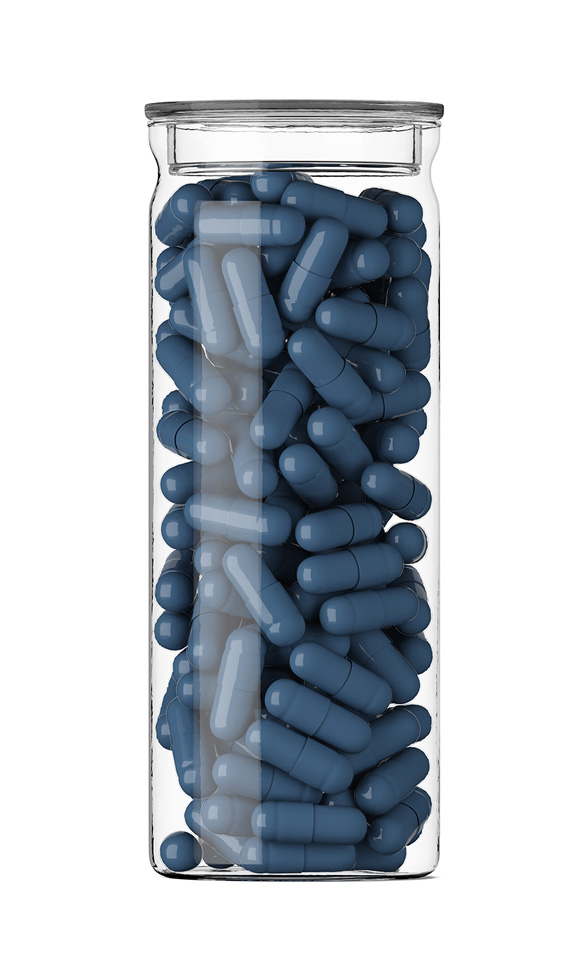
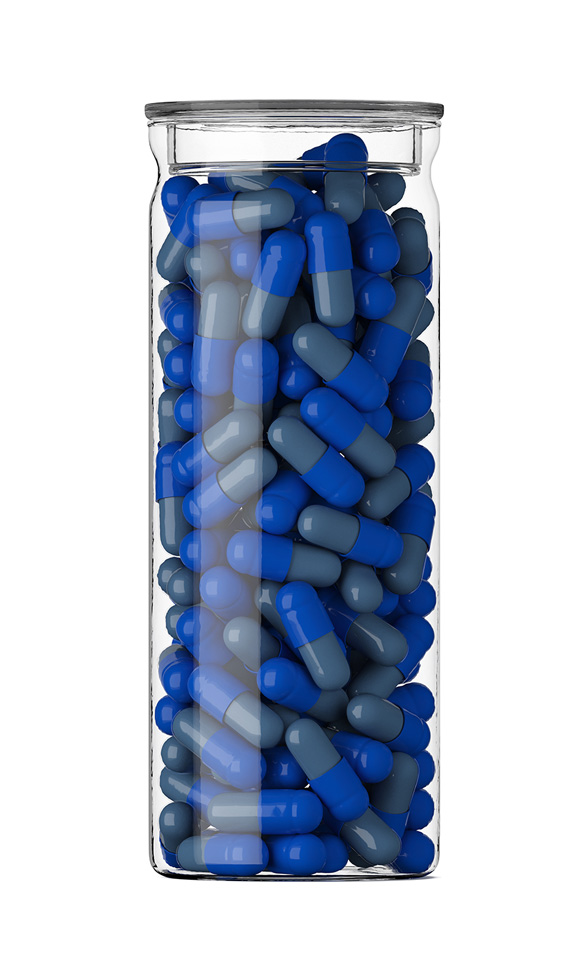
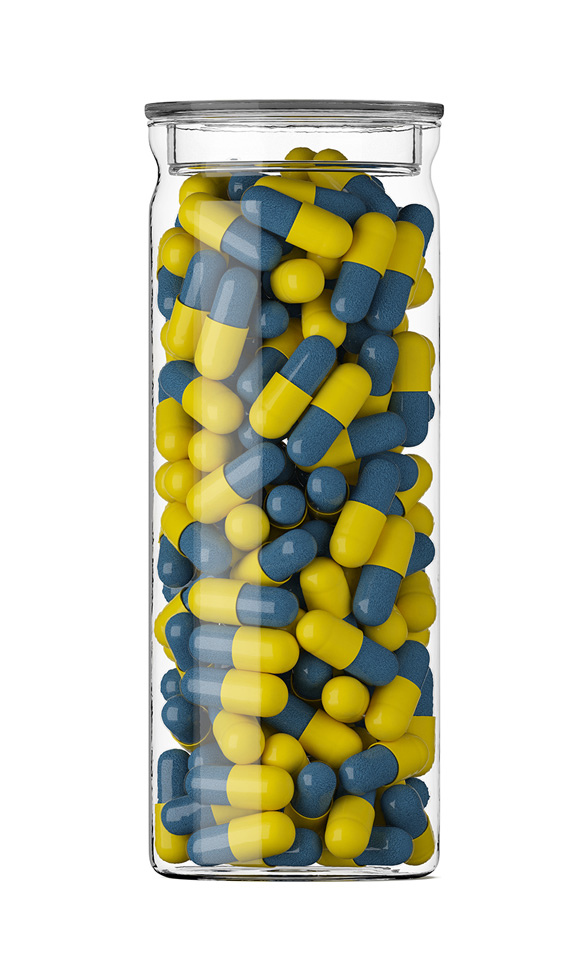
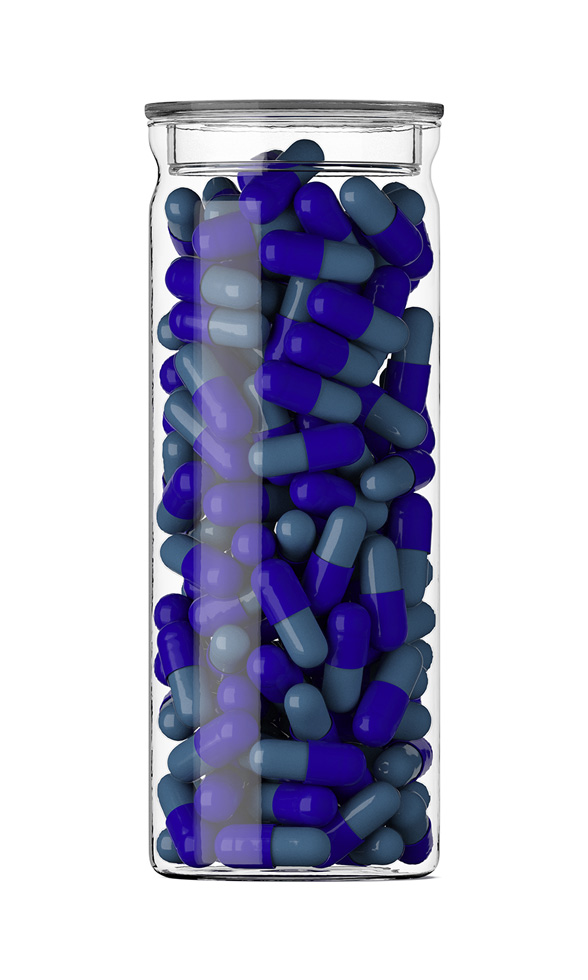
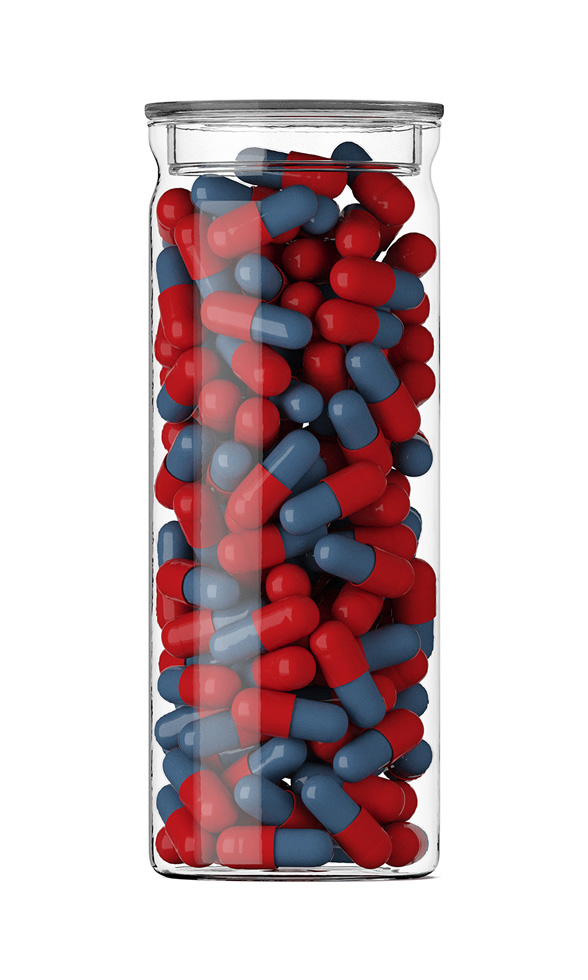
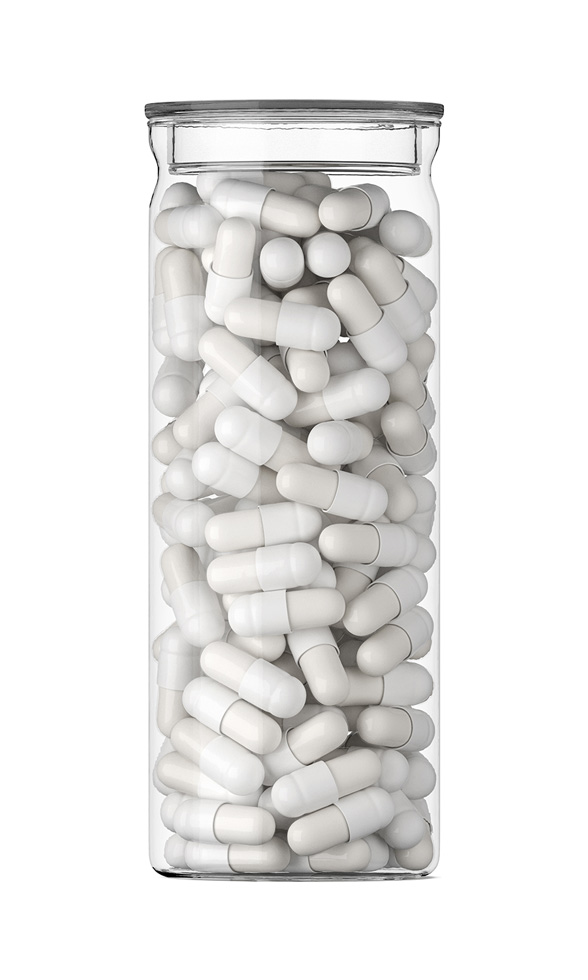 Naltrexone HCl Capsules
Naltrexone HCl Capsules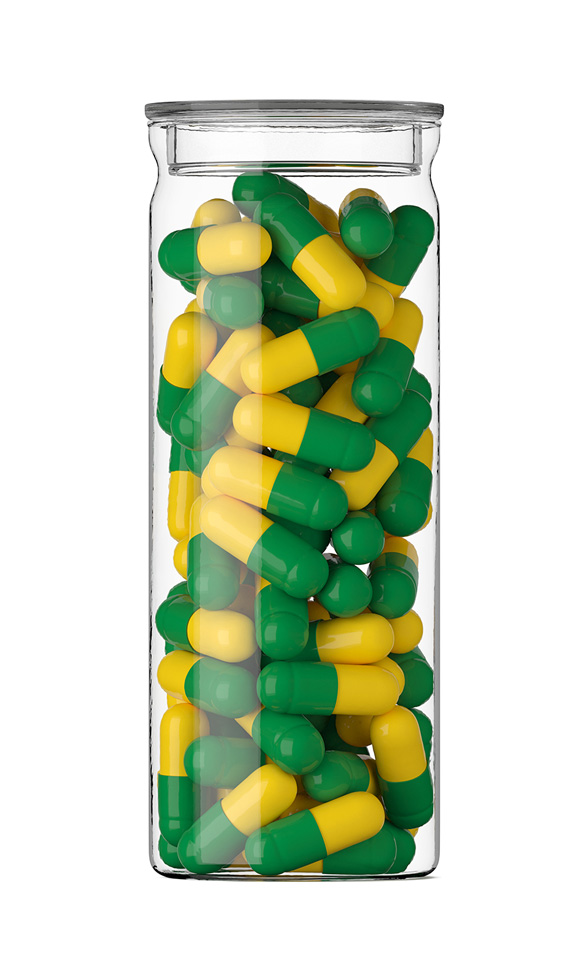 Bella Capsules
Bella Capsules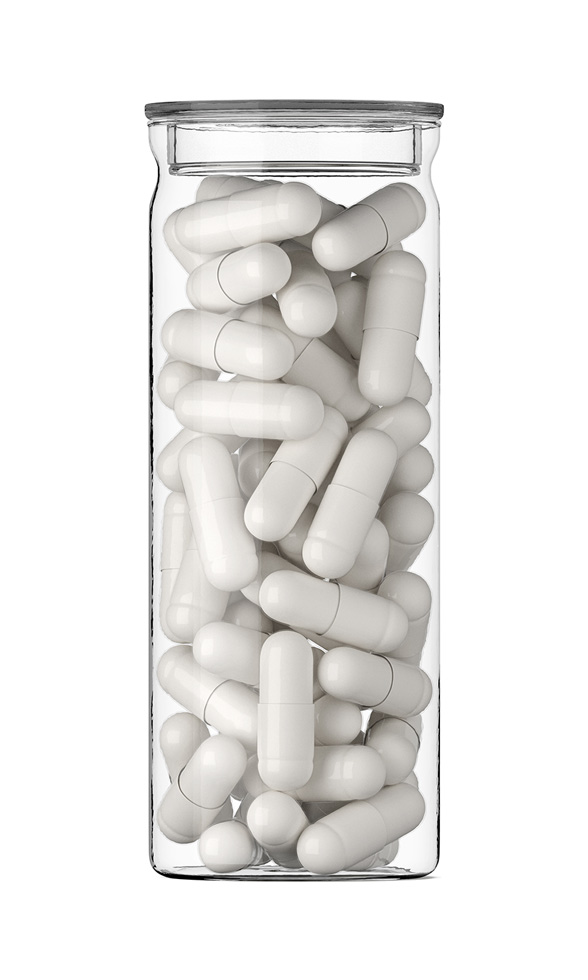 Metformin Synergy Capsules
Metformin Synergy Capsules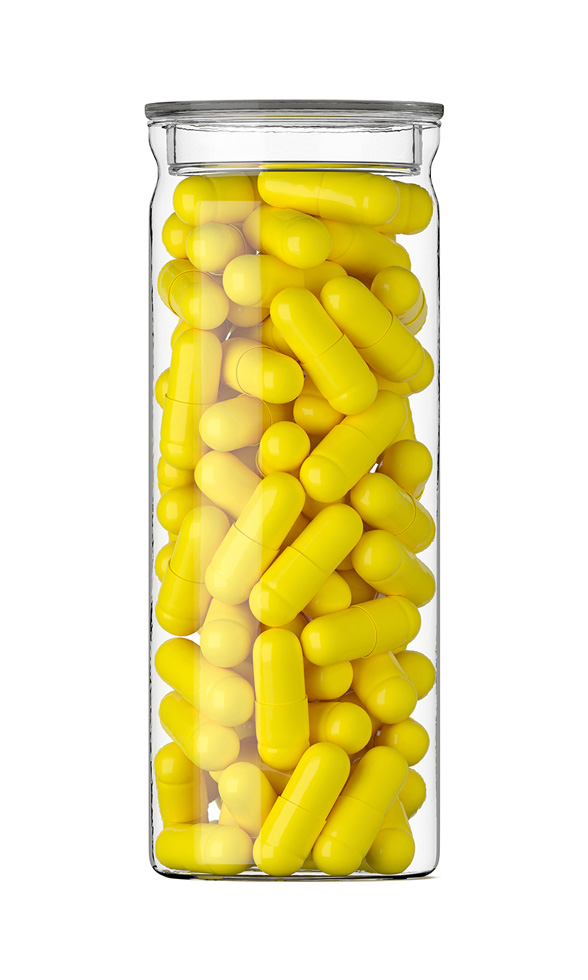 Rapamycin (Sirolimus) Capsules
Rapamycin (Sirolimus) Capsules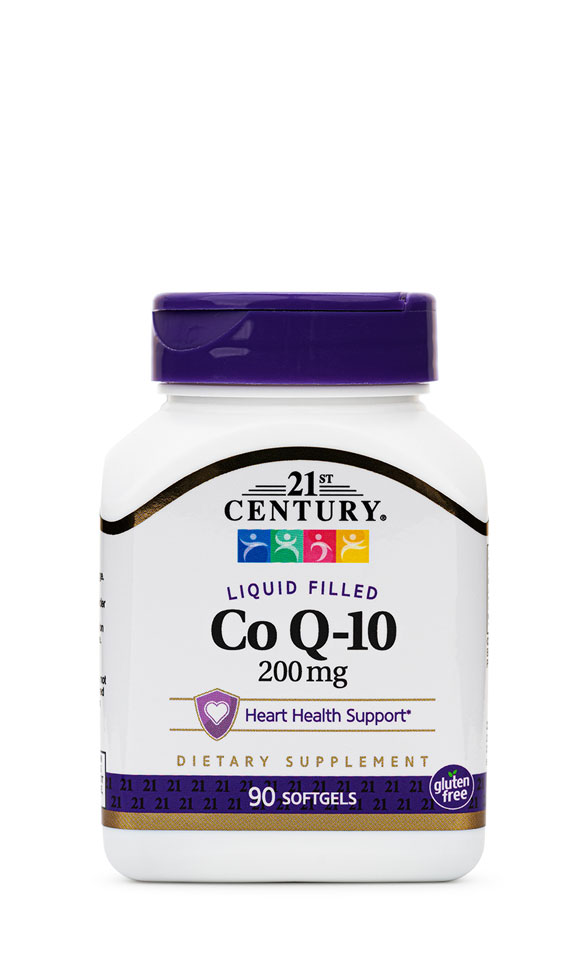 Coenzyme Q10 Capsules
Coenzyme Q10 Capsules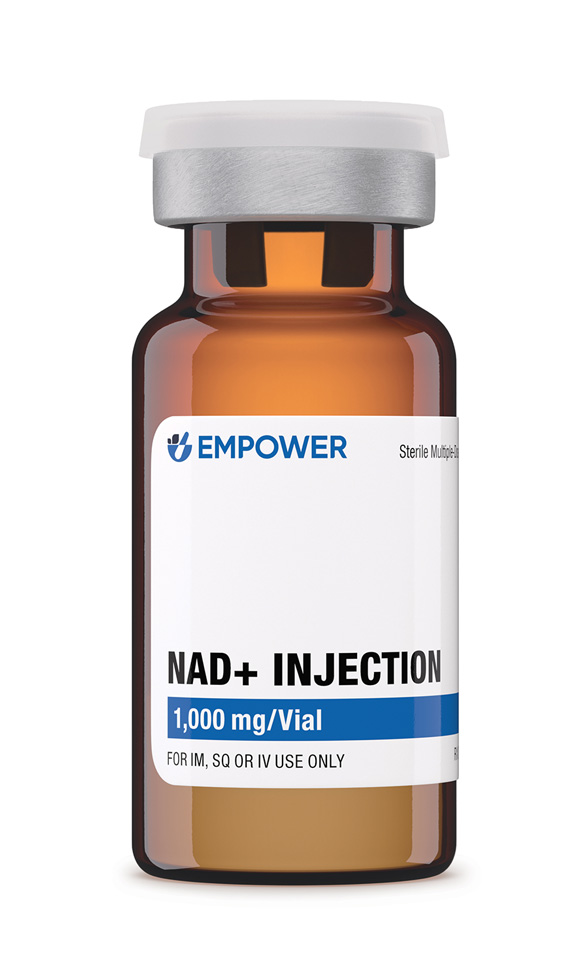 NAD+ Injection (Lyo)
NAD+ Injection (Lyo)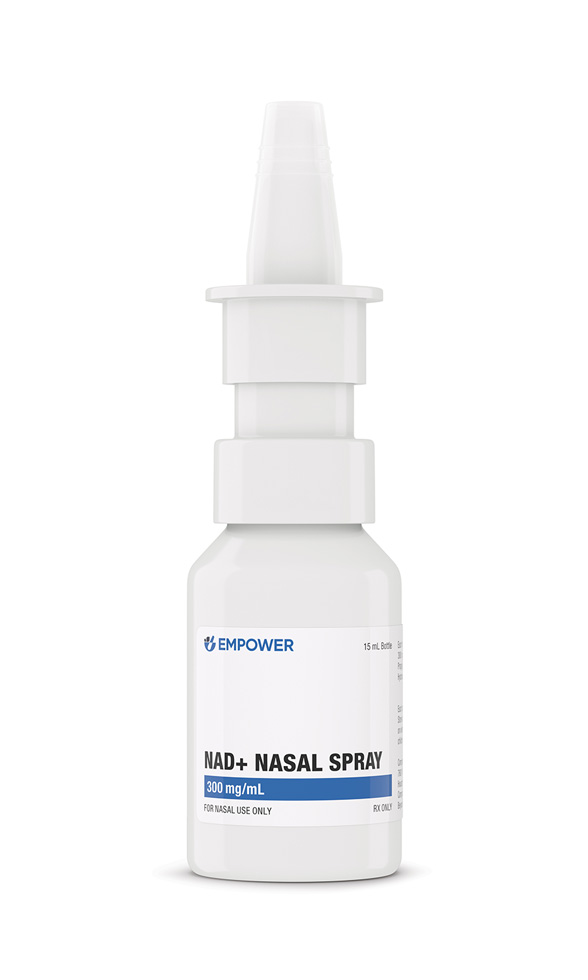 NAD+ Nasal Spray
NAD+ Nasal Spray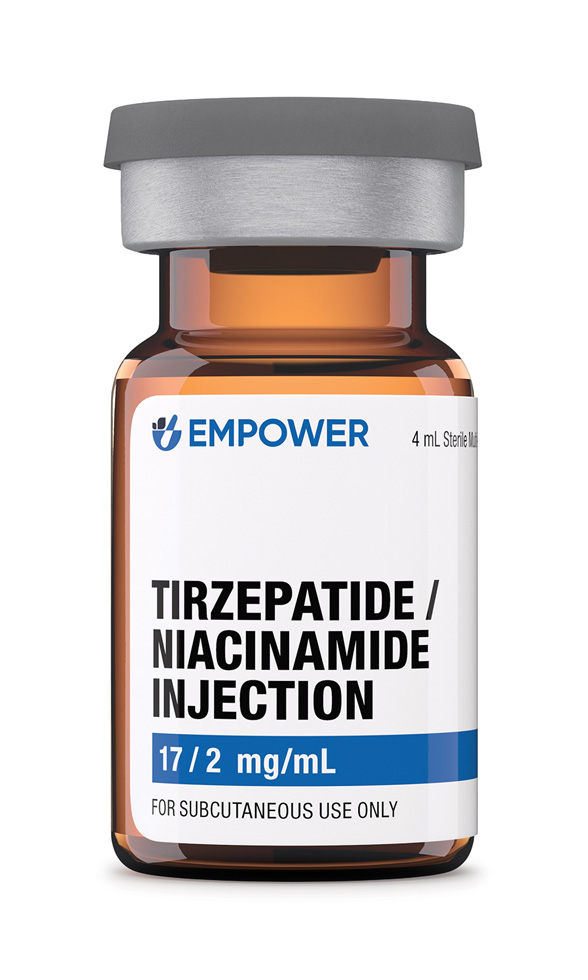 Tirzepatide / Niacinamide Injection
Tirzepatide / Niacinamide Injection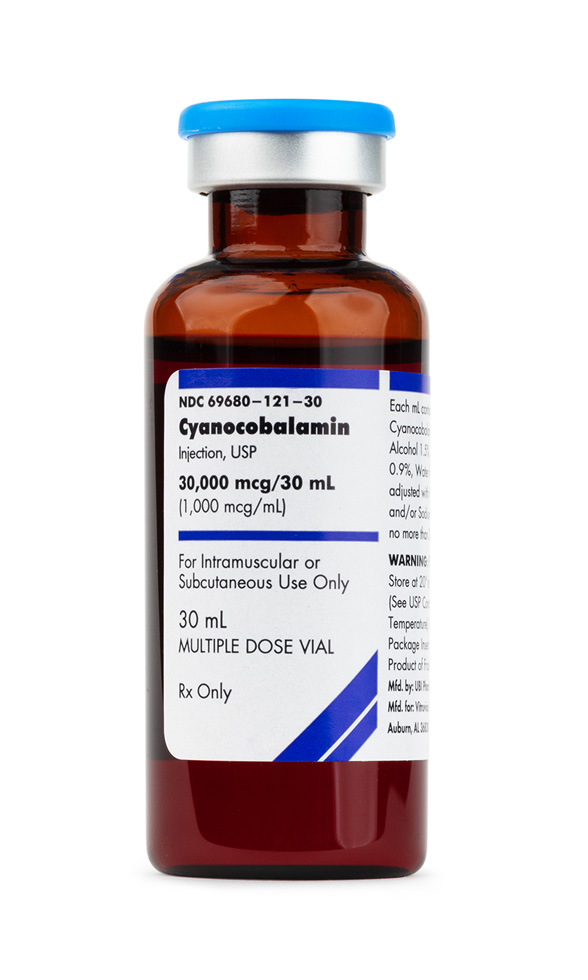 Cyanocobalamin (Vitamin B12) Injection
Cyanocobalamin (Vitamin B12) Injection